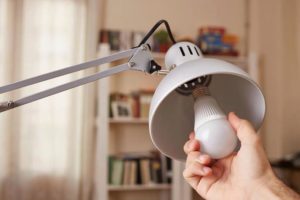On March 7, 2018, the Dominican Republic called for a ban on fluorescent lamp imports and urged state institutions to switch to LED lighting. This is an important step for the country to leapfrog entirely to LED lighting, which saves consumers on their electricity bills and reduces greenhouse gas emissions from electricity production.
 Francisco Domínguez Brito, the Minister for the Environment and Natural Resources stated, “We aim to become the first all LED island in the world, for the benefits it provides to our citizens and the environment. By leapfrogging to LED lighting, the Dominican Republic will not only reduce electricity consumption but also eliminate the use of mercury in lighting products.” By doing so, the Dominican Republic will make progress in achieving commitments made under both the Paris Climate Agreement and the Minamata Convention on Mercury.
Francisco Domínguez Brito, the Minister for the Environment and Natural Resources stated, “We aim to become the first all LED island in the world, for the benefits it provides to our citizens and the environment. By leapfrogging to LED lighting, the Dominican Republic will not only reduce electricity consumption but also eliminate the use of mercury in lighting products.” By doing so, the Dominican Republic will make progress in achieving commitments made under both the Paris Climate Agreement and the Minamata Convention on Mercury.
According the United for Efficiency Country Savings Assessment for the Dominican Republic, a market transformation to LED lighting will result in over 750 thousand tonnes of CO2 emission reductions by 2030 and save nearly $120 million annually in reduced electricity bills.
United for Efficiency has worked with the Dominican Republic and other countries in Central America by developing a Regional Strategy for Energy Efficient Lighting that was agreed to in 2013. The strategy sets forth the steps needed to transition to efficient lighting systems in Central American countries. Currently United for Efficiency is working with the Dominican Republic on development of financial mechanism to support consumers and businesses purchase LED lighting.
United for Efficiency is currently working with nearly 40 countries in Latin America, Africa and Asia to transform their markets to LED lighting. It has a range of tools and resources to support, particularly its Lighting Policy Guide: Accelerating the Global Adoption of Energy-Efficient Lighting.
To see full article in Listin Diario, please click here.


Leave a Reply